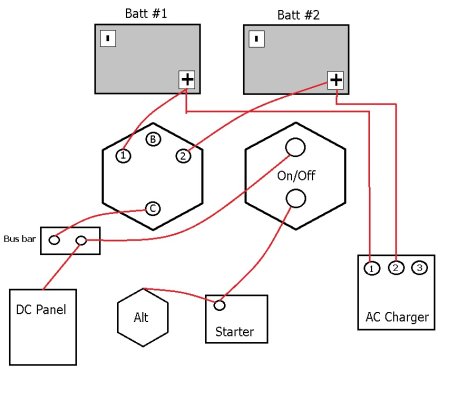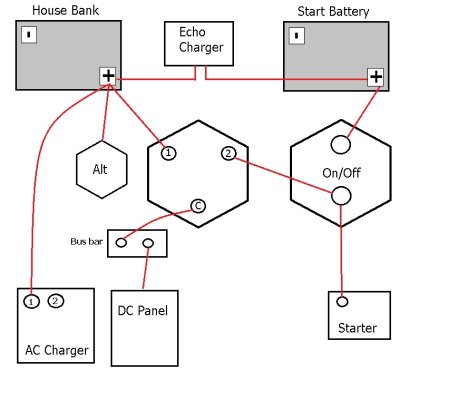I really need some basic help, here is what I have on my 76 CHB 120 Lehman, 55amp alt, two 8d lead batteries as well as one group 27 start battery for the gen.
I would like to add a start battery just for the main engine. I want it separate so I don't have to worry about running the "house batteries" down.
I have a three bank Protech 1240 charger that is working great I see no reason to change it out
I have the same charger. One thing to watch for is bank imbalance. You'll see in the manual they suggest each of the three banks be approx the same size. Not suggesting it's a showstopper...
When I began our battery upgrade -- two large banks, one small genset battery -- the battery guy (not a charger guy) said my proposed set-up would probably be fine.
Over the years, though, I noticed the 1240 sometimes went to float on all three banks prematurely -- perhaps when sensing the genset small battery was fully charged? Or sometimes it instead seemed to be overcharging the small genset battery.
FWIW, I eventually installed an inverter/charger attached to one of the large banks, removed the genset battery from the 1240 altogether (genset has it's own alternator)... so the 1240 now only services the remaining large bank. The 1240 seems to be better, now.
In your case, a very simple/inexpensive alternative might be using the 1240 for only the house bank -- letting your genset and main alternators charge their own start batteries. (Maybe something like a G31 for main engine starter?) A simple pair of jumper cables can be a pretty effective back-up for main and genset starters.
Or another step up, especially if you don't already have an inverter and may want one, could be to put an inverter/charger on your house bank -- which maybe offers inverting advantages anyway -- and using the 1240 for your genset and main start batteries. Happy to help you spend your money.

Anyway, just thought useful to mention that imbalance thing for your consideration...
For your original question... another way to skin that cat might be to just connect your genset starter to your Lehman, too. If the single G27 won't start the main, maybe just add another G27 to that "bank." The main alternator could well keep that charged enough for your needs, and if your genset has an alternator, genset use would augment to that anyway. And like I said, a set of jumper cables is cheap back-up.
-Chris







